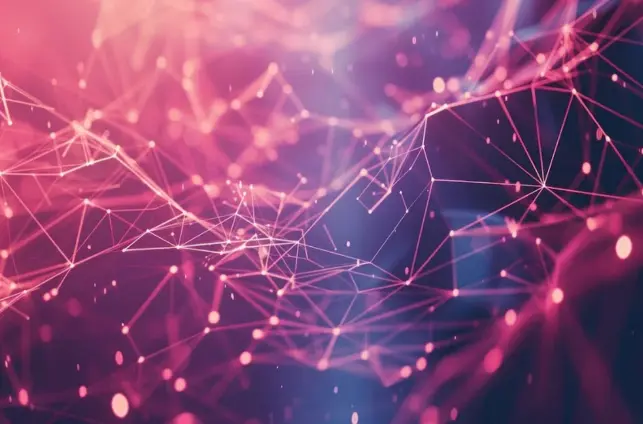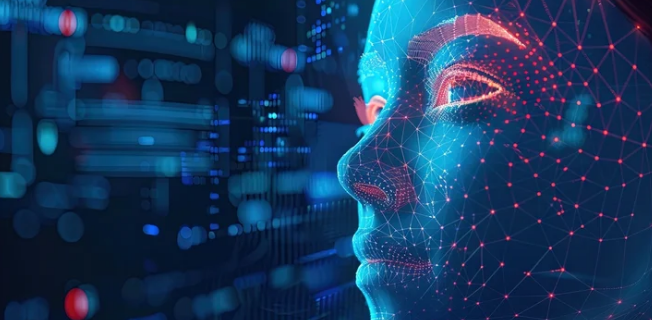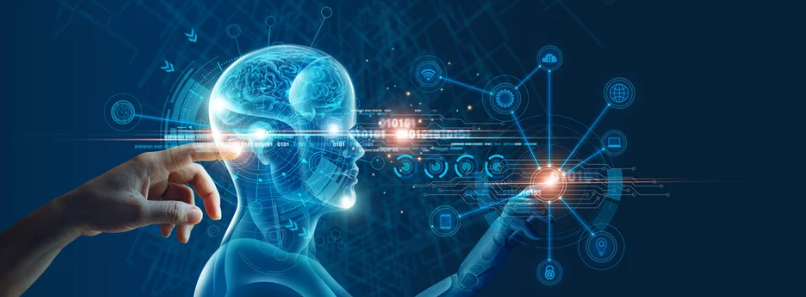Understanding Deep Learning: The Core of Modern AI
Deep learning is a branch of machine learning that leverages multilayered neural networks, known as deep neural networks, to mimic the intricate decision-making processes of the human brain. This technology underpins most artificial intelligence (AI) applications in use today.
The primary distinction between deep learning and traditional machine learning lies in the architecture of the neural networks. Conventional machine learning models use simple neural networks with one or two layers, while deep learning models utilize three or more layers, often extending to hundreds or thousands of layers, to train the models.
Unlike supervised learning models that require structured, labeled data to produce accurate outputs, deep learning models can employ unsupervised learning. Through unsupervised learning, deep learning models can identify characteristics, features, and relationships from raw, unstructured data to generate accurate outputs. Additionally, these models can refine their outputs over time for greater accuracy.
Deep learning plays a significant role in data science, driving numerous applications and services that enhance automation, enabling analytical and physical tasks to be performed without human intervention. This technology supports various everyday products and services, including digital assistants, voice-activated TV remotes, credit card fraud detection, self-driving cars, and generative AI.
How Deep Learning Works
Artificial neural networks, or neural networks, attempt to replicate the human brain's functions using a combination of data inputs, weights, and biases, which act like silicon neurons. These elements work together to accurately recognize, classify, and describe objects within the data.
Deep neural networks consist of multiple interconnected node layers, each building on the previous layer to optimize predictions or classifications. This progression of computations through the network is known as forward propagation. The input and output layers of a deep neural network are termed visible layers. The input layer ingests the data for processing, while the output layer delivers the final prediction or classification.
Another process, called backpropagation, employs algorithms like gradient descent to calculate errors in predictions and adjust the weights and biases by moving backward through the layers to train the model. Together, forward propagation and backpropagation enable a neural network to make predictions and correct errors, becoming increasingly accurate over time.
Deep learning demands substantial computing power. High-performance graphical processing units (GPUs) are ideal as they handle large volumes of calculations across multiple cores with ample memory. Distributed cloud computing can also assist in managing the extensive computational requirements. However, managing multiple GPUs on-premises can strain internal resources and be costly to scale. Most deep learning applications are developed using frameworks such as JAX, PyTorch, or TensorFlow.

Historical Context of Deep Learning
To fully appreciate the significance of deep learning in modern AI, it's essential to understand its historical context and evolution. The concept of artificial neural networks, which forms the basis of deep learning, dates back to the 1940s when Warren McCulloch and Walter Pitts created a computational model for neural networks based on mathematics and algorithms called threshold logic. This laid the groundwork for future developments in the field.Key Milestones in Deep Learning History:
1950s-1960s: The perceptron, a simple neural network, was invented by Frank Rosenblatt in 1958. This sparked initial excitement about neural networks.
1969: Marvin Minsky and Seymour Papert published "Perceptrons," highlighting limitations of single-layer neural networks, which led to a decline in neural network research.
1980s: The backpropagation algorithm was popularized for training multi-layer neural networks, reigniting interest in the field.
1990s-2000s: Support Vector Machines and other machine learning techniques overshadowed neural networks in popularity.
2006: Geoffrey Hinton introduced the concept of deep belief networks, marking the beginning of the deep learning renaissance.
2012: AlexNet, a deep convolutional neural network, achieved breakthrough performance in the ImageNet competition, catalyzing widespread adoption of deep learning.
2014-Present: Rapid advancements in deep learning across various domains, including natural language processing, computer vision, and reinforcement learning.
Fundamental Concepts in Deep Learning
To delve deeper into the workings of deep learning, it's crucial to understand some fundamental concepts that underpin this technology:Neural Network Architecture
Input Layer: Receives raw data and passes it to the hidden layers.
Hidden Layers: Process the data through various transformations. Deep networks have multiple hidden layers.
Output Layer: Produces the final prediction or classification.
Activation Functions
Activation functions introduce non-linearity into the network, allowing it to learn complex patterns. Common activation functions include:Loss Functions
Loss functions measure the difference between the network's predictions and the actual target values. Examples include:Optimization Algorithms
These algorithms adjust the network's parameters to minimize the loss function. Popular choices include:Types of Deep Learning Models
Deep learning algorithms are highly complex, with various types of neural networks designed to address specific problems or datasets. Here are six notable types, each with its advantages and challenges:Convolutional Neural Networks (CNNs):
Recurrent Neural Networks (RNNs):
Autoencoders and Variational Autoencoders (VAEs):
4. Generative Adversarial Networks (GANs):
5. Diffusion Models:
6. Transformer Models:

Advanced Deep Learning Architectures
As deep learning has evolved, researchers have developed increasingly sophisticated architectures to tackle complex problems. Here are some advanced architectures that have pushed the boundaries of what's possible with deep learning:Long Short-Term Memory (LSTM) Networks
LSTMs are a type of RNN designed to address the vanishing gradient problem, allowing them to learn long-term dependencies in sequential data.Key components of an LSTM cell:
Applications:
Attention Mechanisms and Transformers
Attention mechanisms allow models to focus on relevant parts of the input when making predictions. Transformers, introduced in the paper "Attention Is All You Need," use self-attention to process sequential data in parallel, leading to significant improvements in natural language processing tasks.Key concepts in Transformers:
Applications:
Graph Neural Networks (GNNs)
GNNs are designed to process data represented as graphs, allowing them to capture complex relationships between entities.Types of GNNs:
Applications:
Capsule Networks
Introduced by Geoffrey Hinton, Capsule Networks aim to address limitations of CNNs by encoding spatial relationships between features.Key concepts:
Potential applications:
Deep Learning in Specific Domains
Deep learning has made significant impacts across various domains. Let's explore how deep learning is applied in some key areas:Natural Language Processing (NLP)
Deep learning has revolutionized NLP, enabling machines to understand and generate human language with unprecedented accuracy.Key applications:
Computer Vision
Deep learning has dramatically improved the state-of-the-art in various computer vision tasks.Key applications:
Speech Recognition and Synthesis
Deep learning has significantly enhanced both speech recognition (converting spoken language to text) and speech synthesis (generating spoken language from text).Key technologies:
End-to-end speech recognition systems using CTC (Connectionist Temporal Classification) loss.
WaveNet: A deep generative model for producing high-quality speech waveforms.
Tacotron: An end-to-end text-to-speech synthesis system using deep learning.
Robotics and Control Systems
Deep learning is increasingly being applied in robotics and control systems, enabling more adaptive and intelligent behavior.Applications:
Bioinformatics and Healthcare
Deep learning is making significant contributions to bioinformatics and healthcare, aiding in drug discovery, disease diagnosis, and personalized medicine.Applications:
Deep Learning Use Cases
Deep learning applications are widespread, enhancing various industries:
Challenges and Future Directions in Deep Learning
While deep learning has achieved remarkable successes, it also faces several challenges that researchers are actively working to address. Understanding these challenges and potential future directions is crucial for anyone working in or studying deep learning.Current Challenges
Future Directions
Few-Shot and Zero-Shot Learning: Developing models that can learn from very few examples (few-shot) or generalize to completely new classes without any examples (zero-shot) is an active area of research.Ethical Considerations in Deep Learning
As deep learning systems become increasingly integrated into various aspects of society, it's crucial to consider the ethical implications of their development and deployment. Here are some key ethical considerations:Bias and Fairness
Deep learning models can inadvertently perpetuate or amplify societal biases present in their training data. This can lead to unfair or discriminatory outcomes in applications such as hiring, lending, or criminal justice.Challenges:
Potential solutions:
Privacy and Data Protection
Deep learning models often require large amounts of data for training, which can raise concerns about individual privacy and data protection.Challenges:
Potential solutions:
Transparency and Explainability
The "black box" nature of many deep learning models can make it difficult to understand and explain their decision-making processes, which is crucial in applications where accountability is important.Challenges:
Wrapping Up: Deep Learning's Boundless Future
Deep learning has emerged as a transformative force in the realm of artificial intelligence, reshaping industries and enhancing our daily lives in unprecedented ways. By mimicking the complex decision-making processes of the human brain through multilayered neural networks, deep learning has unlocked new possibilities in fields ranging from healthcare and finance to natural language processing and computer vision.As we continue to explore and innovate within this dynamic landscape, it is crucial to address the ethical considerations and challenges that accompany these advancements. By fostering transparency, fairness, and accountability in deep learning systems, we can harness the full potential of this powerful technology while ensuring it serves the greater good. The future of deep learning promises exciting developments, and as researchers, practitioners, and society as a whole engage with these innovations, we can look forward to a world where AI not only enhances efficiency and productivity but also enriches human experiences and fosters inclusivity.
Deep learning continues to drive innovation, transforming how businesses operate and enhancing various aspects of daily life.
Learn more about AI and ML here: ML AI News.
Machine Learning Artificial Intelligence News
https://machinelearningartificialintelligence.com
AI & ML



Sign Up for Our Newsletter